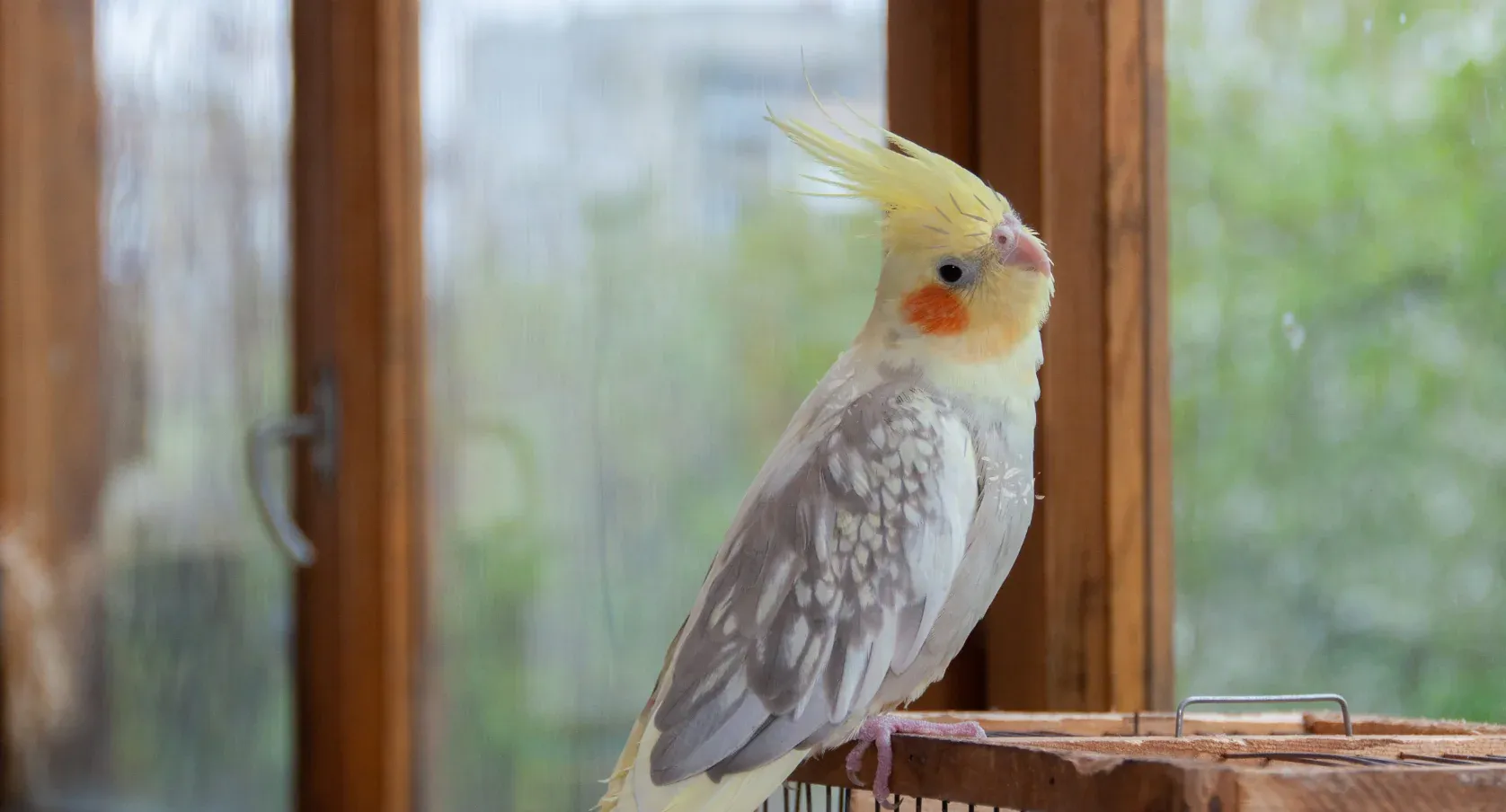A molting cockatiel can be alarming—feathers scattered everywhere, unusual behavior, and uncertainty about whether it’s normal. If you’re concerned about your bird’s comfort, health, or potential plucking, this guide breaks it down. Learn how to recognize cockatiel molting, support your pet through it, and spot when professional help is needed.
Cockatiel owners often search for reliable info on cockatiel molting to ensure their feathered friends thrive. This natural process renews feathers for better flight, insulation, and appearance, but it demands extra care. With the right knowledge, you can help your cockatiel emerge stronger and fluffier.
Why Do Cockatiels Molt? Understanding the Basics
Molting is a vital renewal cycle where cockatiels shed old or damaged feathers and grow new ones. It maintains plumage health essential for insulation, flight, and preening. Healthy cockatiels typically molt a few times annually, influenced by age, health, and environment.
During cockatiel molting, expect behavioral shifts like reduced activity, more preening, or quieter chirping. These stem from the energy-intensive feather growth, redirecting resources from play to regeneration.
Juvenile cockatiels undergo their first major molt between 6-12 months, transitioning baby feathers to adult patterns. Seasonal molts occur in spring (pre-breeding) and fall (winter prep), varying in intensity based on diet, stress, and lighting.
 Molting cockatiel showing pin feathers emerging
Molting cockatiel showing pin feathers emerging
Indoor cockatiels may experience irregular “soft molts” due to constant temperatures and artificial light, deviating from wild seasonal patterns. Observing your bird’s unique rhythm helps distinguish normalcy from issues.
The Cockatiel Molt Timeline and Triggers
Cockatiel molting often aligns with daylight changes—longer days in spring or shorter in fall. Temperature fluctuations, hormonal shifts, and even household routines can trigger it.
Not all molts are identical; some birds lose feathers gradually, others more noticeably. Factors like nutrition and stress affect duration, typically 4-6 weeks. Track patterns over time for personalized insights.
Pet cockatiels under stable conditions might molt unpredictably, lacking natural cues. Provide consistent daylight (10-12 hours) to mimic nature and promote healthy cycles.
Spotting Normal Cockatiel Molting: Key Signs
Visual cues include loose feathers at the cage bottom and pin feathers—white, sheath-covered spikes on head, chest, or wings. These mature into full feathers as keratin softens.
Behaviorally, molting cockatiels may seem withdrawn, vocalize less, or avoid handling due to sensitive pins. Offer verbal interaction and protein treats like millet or quinoa instead.
Increased scratching or rubbing loosens sheaths; it’s normal unless excessive. Assist gently with a soft toothbrush on unreachable spots like the crest, if tolerated. Frequent misting baths hydrate skin and ease discomfort.
| Molting preening is rhythmic and even, moving feather to feather. Plucking is intense and focused on one spot. Diane Burroughs, LCSW |
|---|
Differentiating Molting from Serious Problems
While cockatiel molting is routine, watch for red flags like bald patches, scabs, swollen skin, bleeding, or feather pulling. These suggest mites, illness, allergies, or stress-induced plucking.
Normal molting is symmetrical—feathers drop evenly from both sides. Plucking creates irregular bald spots. Fatigue, appetite loss, or droppings changes warrant immediate vet attention.
Avian vets recommend baseline exams for molting birds, especially repeat cases. Early intervention prevents chronic issues.
| Never pull pin feathers manually—it’s painful and delays regrowth, wasting vital energy. Diane Burroughs, LCSW |
|---|
Nutrition for Optimal Cockatiel Molting Support
Feathers consist of keratin protein, demanding ample amino acids during cockatiel molting. Deficiencies lead to weak, dull feathers. Boost with biotin, omega-3s, vitamin A, and calcium.
Prioritize quality pellets as base (avoid seed-only diets), plus leafy greens, veggies, fruits, and seeds like chia/flax sparingly. Supplements fill gaps; consult vets for brands like FeatherUp.
Protein-rich additions—hard-boiled eggs, cooked legumes—fuel growth. Hydration is key; fresh water daily prevents dry sheaths.
Easing Discomfort During Cockatiel Molting
Itching peaks with pin feathers; mist daily with plain water or aloe spray for soothing. Dry in warm, draft-free areas post-bath.
Cage tweaks include soft perches for rubbing, minimal changes, and dimmed lights for rest. Stress exacerbates molting—maintain routines.
Avoid over-handling; respect space while bonding verbally. These steps reduce irritation and speed recovery.
Your Cockatiel Molt Care Routine
Implement this plan from first dropped feathers through completion:
- Daily: Mist with aloe spray morning/evening; add feather vitamins to soft food twice.
- Weekly: Red palm oil 3x for vitamin A/skin health.
- Ongoing: High-protein diet, quiet rest periods.
Most molts last 4-6 weeks; consistency yields vibrant results.
When to Seek Veterinary Help for Molting Cockatiels
Contact an avian vet if weakness, persistent baldness, plucking, or eating refusal occurs. Abnormal droppings or isolation signal underlying problems like infections or nutritional deficits.
Proactive care during cockatiel molting bolsters year-round health. Regular check-ups ensure thriving.
In summary, cockatiel molting is normal but requires attentive nutrition, comfort, and monitoring. Support your bird with diet tweaks, gentle care, and prompt vet visits for anomalies. Your efforts build resilience—share experiences in comments and explore more bird care tips!
References
- Groom, J. V., II, & Williams, D. L. (2015). Feather loss and feather damaging behavior in psittacine birds. Journal of Exotic Pet Medicine, 24(3), 210–220. https://doi.org/10.1053/j.jepm.2015.06.002
- Jayson, S. L., et al. (2022). Behavioral and environmental management of feather disorders. Veterinary Clinics: Exotic Animal Practice, 25(1), 1–16. https://doi.org/10.1016/j.cvex.2021.10.001
- Speer, B. L. (2016). Current veterinary therapy in exotic pet practice. Elsevier.
